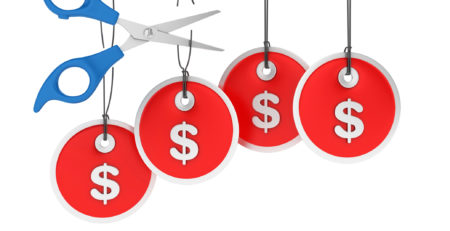7 Ways to Break Bad Spending Habits
Managing finances effectively is crucial in today’s world, where it’s easy to fall into the trap of poor spending habits. From understanding and tracking your spending to smart credit use and debt management, these steps are designed to reshape your financial habits. With practical advice and actionable tips, this guide will steer you towards better financial decisions and a healthier financial future.
1. Understand Your Spending Habits
To navigate the path to financial wellness effectively, it’s essential to gain a deep understanding of your spending habits. Here are some key points to consider:
Track Your Spending
- Identify Areas of Overspending: Keep a detailed record of your expenses. This step is essential to pinpoint where your money goes, which could reveal unexpected areas of high spending.
- Use Tools and Apps: Leverage budgeting tools or apps to make this process easier and more accurate.
Recognize Emotional and Impulsive Spending
- Understand Emotional Triggers: Acknowledge that emotional states can lead to impulsive purchases, significantly impacting your financial health.
- Identify Patterns: Notice when and why you tend to make impulsive purchases. Is it stress, happiness, or social influence?
- Plan to Counteract: Once you recognize these patterns, you can develop strategies to counteract them, like delaying the purchase or finding alternative stress-relief methods.
Reflect on Purchases
- Needs vs. Wants: Regularly assess your purchases. Ask yourself if each item was a need or a want.
- Post-Purchase Evaluation: After making a purchase, especially an impulsive one, reflect on whether it was necessary and how it made you feel afterward.
2. Set Specific Goals
A critical step in breaking bad spending habits is setting specific, achievable savings goals. Both short-term and long-term objectives play a vital role in maintaining financial discipline. Having clear savings targets can significantly boost your self-discipline, especially in situations that might tempt you to overspend.
The Importance of Specific Goals
- Focus and Clarity: Specific goals provide a clear direction for your financial efforts. They allow you to measure your progress, which can be incredibly motivating.For example, aim to spend half as much at restaurants this month compared to the last.
Strategies for Achieving Your Goals
- Divide big goals into smaller, more manageable steps.
- Regularly check your progress to stay on track and make adjustments as needed.
- Consider setting up automatic transfers to your savings account to consistently work towards your goal.
3. Use Credit Wisely
When it comes to personal finance, credit cards are a double-edged sword. While they offer convenience and rewards, their misuse can lead to a spiral of debt. It’s crucial to understand both the pitfalls of relying heavily on credit cards and the benefits of using them responsibly.
Pitfalls of Credit Card Use
- High Interest and Debt Spiral: Credit cards often come with high-interest rates, especially when balances are carried over month to month, leading to a debt spiral.
- Impulsive Spending: The ease of using credit cards can lead to impulsive purchases and overspending.
- Credit Score Impact: Mismanagement of credit cards can negatively affect your credit score, impacting future loan opportunities.
Benefits of Responsible Credit Use
- Building Credit History: When used wisely, credit cards are excellent tools for building a positive credit history.
- Rewards and Benefits: Many credit cards offer rewards, cashback, and other benefits that can be advantageous if the balance is paid in full each month.
Practical Alternatives
- Using Cash or Debit Cards: One effective way to avoid the pitfalls of credit cards is to use cash or debit cards for purchases. This approach ensures you spend only what you have, avoiding the trap of accruing debt.
- Prepaid Cards: Prepaid cards are another option, allowing you to load a set amount of money and restrict spending to that limit.
- Envelope Budgeting System: For those who prefer a more tactile method, the envelope budgeting system involves allocating cash for different spending categories in separate envelopes.
4. Manage Social Spending
Social life is an important aspect of our well-being, but it can often lead to overspending, especially under the influence of peer pressure or the desire to keep up with others. Here’s how you can manage your social spending wisely:
Recognize Social Spending Traps
- Peer Pressure: Be aware of how your social circle might influence your spending habits. For instance, frequent dining out or expensive group vacations can strain your budget.
- Social Media Influence: Social media can also create unrealistic expectations regarding lifestyle and spending.
Strategies for Cost-Effective Socializing
- Alternative Social Activities: Instead of high-cost outings, suggest cost-effective alternatives like potlucks, game nights at home, or free community events.
- Setting Boundaries: Be honest about your budgetary constraints with friends. Good friends will understand and respect your financial choices.
Balancing Social Life and Budget
- Prioritize Events: Not all social events are equally important. Choose to spend on events that are most meaningful to you.
- Budget for Socializing: Allocate a specific amount in your budget for social activities. Stick to this limit to maintain a balance.
5. Cut Down on Subscriptions and Fees
In today’s digital age, it’s easy to accumulate a number of subscriptions and recurring fees, many of which we may not actively use. Regularly reviewing and managing these expenses is essential for keeping your finances in check.
Audit Your Subscriptions
- List All Subscriptions: Make a comprehensive list of all your subscriptions – streaming services, magazines, apps, and gym memberships.
- Evaluate Usage: Honestly assess how often you use each service. If a subscription isn’t bringing you value, it’s likely a candidate for cancellation.
Avoidable Fees
- Bank and Credit Card Fees: Keep an eye on fees for ATM withdrawals, overdrafts, or credit card late payment fees. Many of these can be avoided with careful planning.
- Subscription Auto-Renewals: Watch out for subscriptions that auto-renew. Set reminders to evaluate these services before they renew automatically.
Alternatives and Adjustments
- Share Plans: Consider sharing subscription plans with family or friends where possible, as many services offer family or group packages.
- Free Alternatives: Explore free or less expensive alternatives to your current subscriptions. For instance, free streaming services with ads, public libraries for books and media, or outdoor activities instead of a gym membership.
6. Embrace Delayed Gratification
One of the most effective strategies for achieving financial stability and avoiding debt is embracing the concept of delayed gratification, especially when it comes to purchasing big-ticket items.
Benefits of Saving for Major Purchases
- Avoiding Debt: By saving up for expensive items instead of relying on credit, you avoid accruing interest and potentially falling into a debt trap.
- Increased Appreciation: When you save for a significant purchase, you tend to value it more because of the effort and time invested in acquiring it.
- Financial Discipline: This approach helps in developing financial discipline, teaching you to prioritize and wait for the right time to make a purchase.
Mindset Shift
- Long-Term Perspective: Shift your perspective to focus on long-term benefits rather than immediate satisfaction.
- Reward System: Reward yourself for reaching smaller milestones in your savings journey, which can help in maintaining motivation.
7. Consolidate Debt with an Installment Loan
Consolidating debt through an installment loan can be an effective strategy to simplify your financial management and potentially reduce your monthly payments.
Understanding Debt Consolidation with an Installment Loan
- Simplification: An installment loan consolidates multiple debts into one loan, making it easier to manage with a single monthly payment.
- Potentially Lower Interest Rates: Often, installment loans have lower interest rates compared to high-interest credit card debts, potentially reducing the overall amount paid over time.
The Process of Consolidating Debt
- Assess Your Debts: Start by tallying all your current debts – credit cards, personal loans, etc.
- Secure an Installment Loan: Apply for an installment loan for the total amount of your debts. Once approved, use the loan to pay off your existing debts.
- One Consolidated Payment: You then make monthly payments on this new installment loan, usually at a lower interest rate and potentially with better terms.
Long-Term Financial Health
- Financial Planning: Use this as an opportunity to reassess your spending habits and budget to avoid future debt accumulation.
- Credit Score Impact: Successfully managing and repaying the installment loan can positively impact your credit score over time.
Empower Your Financial Future with Koster’s Cash Loans
At Koster’s Cash Loans, we understand that managing finances can be challenging, contact us today to explore how our installment loans can simplify your payments and put you on the path to financial stability.











